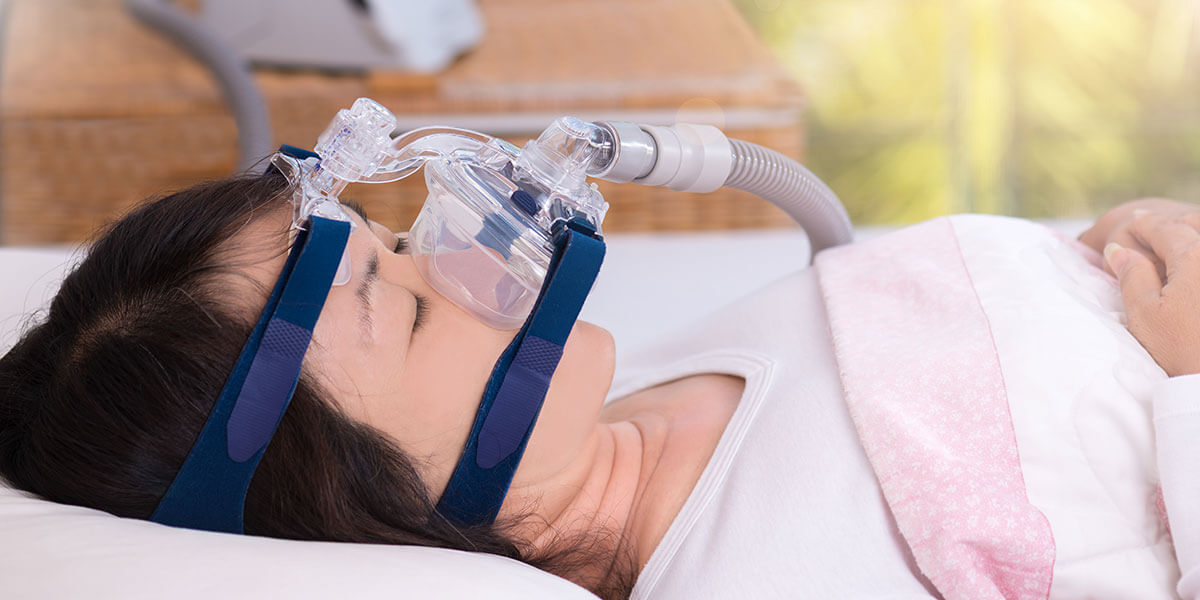Sleep Apnea Treatment in Easton, PA

Obstructive sleep apnea is an ongoing condition that disrupts sleep.
When breathing is paused or becomes shallow, one will often move out of deep sleep and into light sleep, making the quality of sleep poor. Sleep apnea can be treated with lifestyle changes, mouthpieces, breathing devices, and/or surgery.
Oral Appliance Therapy (OAT) is often an effective alternative to CPAP for patients suffering from obstructive sleep apnea.
Many patients suffering from sleep apnea can find relief using a custom removable Oral Appliance Therapy appliance, which adjusts the position of the lower jaw and tongue to minimize airway obstruction.
For moderate to severe sleep apnea, a breathing device called CPAP (continuous positive airway pressure) or surgery to widen the breathing passages by shrinking, stiffening, or removing excess tissue in the mouth and throat or resetting the lower jaw may be helpful. A CPAP machine uses a mask that fits over your mouth and/or nose and gently blows air into your throat. This air pressure helps keep your airway open while you sleep. Surgery to shrink the tissue involves a small shot into the breathing passages. Surgery to stiffen excess tissue requires a small incision in the tissue and inserting a piece of stiff plastic.
Screening for Sleep Apnea
The Eccovision Acoustic Diagnostic Pharyngometer and Rhinometer provides valuable information about airway size and stability. It is a highly useful tool for prescreening for sleep apnea disordered breathing as well as for titrating oral appliances for sleep apnea. The devise uses acoustic reflection technology to accurately map out the size, structure and collapsibility of the oral and nasal airway.
Acoustic Pharyngometer
The Pharyngometer allows users to quickly and easily measure a patient’s pharyngeal airway size and stability from the oral pharyngeal junction to the glottis. Studies have shown a clear relationship between the existences of obstructive sleep apnea and a narrow collapsible airway.
The phayngometer accomplishes these measurements using acoustic reflection technology, similar to a ship’s sonar. The test is minimally invasive and takes 2-5 minutes to complete.
Sleep dentists use the pharyngometer to screen patients prior to a diagnosis. A narrow airway reading on the device correlates to a higher apnea hypopnea indices once the person is diagnosed. After the diagnosis, the pharyngometer helps to show us how the airway changes in the response to the mandibular advancement with an oral appliance.
Acoustic Rhinometer
The acoustic rhinometer allows for quick and easy measurements of nasal patency. Soundwaves are sent up the nasal passageway and they are reflected back out in such a way that the rhinometer can accurately map out the topography of the nasal airway. This allows us to clearly identify the location and severity of any obstruction in the airway. The test is completely non-invasive and takes 30 seconds to complete.
It is well documented that a compromised nasal airway is a cause of mouth breathing which can lead to a worsening of obstructive sleep apnea symptoms. Mouth breathing is children is a primary cause behind facial growth and orthodontic problems. Issues with a compromised airway will usually require a referral to an ENT doctor.
Frequently Asked Questions
What are the signs or symptoms of obstructive sleep apnea?
There are a few common signs of OSA that you can look out for, including:
- Snoring
- Wake up gasping for air throughout the night
- Morning headaches
- Waking up exhausted
- Inability to concentrate
What causes obstructive sleep apnea?
Obstructive sleep apnea occurs when the soft tissue of the mouth and throat is very relaxed and blocks the airway. The most common cause of OSA in adults is obesity.
Will obstructive sleep apnea go away on its own?
Obstructive sleep apnea won’t usually just go away on its own. Losing excess weight or having surgery to remove excess tissue from the throat area are the only ways in which you can rid yourself of the condition. However, oral appliances work well to minimize or diminish the symptoms.
Why should I see a dentist for obstructive sleep apnea?
Some dentists practice sleep medicine. During their normal oral examinations, they are able to identify patients who may be at risk for OSA. Further, they have oral appliances and knowledge of solutions.
Can sleep apnea harm my oral health?
Yes. Obstructive sleep apnea can play a big role in your overall oral health. Increased plaque leading to cavities and decay can be caused by a dry mouth. Those with OSA sleep with their mouth open often, which could have a direct impact on their oral health.
How do I care for my Oral Appliance?
Oral appliances for obstructive sleep apnea are easy to care for. Using a soft-bristled toothbrush and non-abrasive toothpaste, gently clean your appliance. You may also use mild dish soap or denture cleaner, too. Be sure to store it in a clean container while you are not wearing it.
What do I do if I think I may have obstructive sleep apnea?
If you are experiencing any of the signs and you think you may have OSA, then make an appointment with Fabey Dental by calling 610-810-2704
